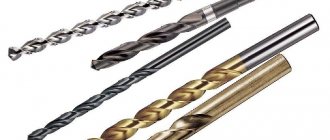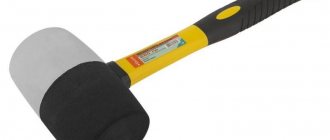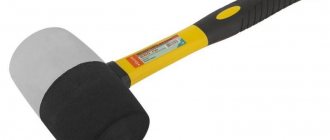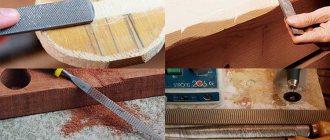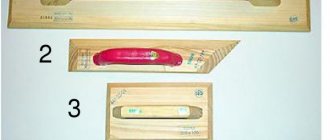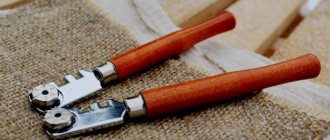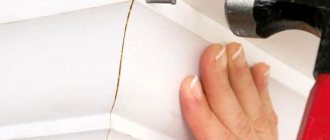Changed and forgot | 06/28/2015
A universal and important tool, without which no repair can be done, regardless of the complexity of the work performed, is a drill. Today, the building materials market offers a wide selection of different types of drills. All drills differ not only in length and diameter, but also in the material for which they are intended for drilling (wood, metal, concrete, ceramic tiles, brick, glass). Before drilling a particular material, it is necessary to select the appropriate drill size. Its type is selected depending on the work performed.
Types of drills
The ideal drilling result depends not only on the professionalism and experience of the master, but also on the correct selection of the drill. The right tool will make the job much easier. Types of drills for metal surfaces differ in the type of configuration and the material from which they are made.
1. Twist drills are standard cylindrical products. They reach 80 mm in diameter. Made from high quality steel. Their design is such that the working surfaces are sharpened at an angle of 118 degrees. They are needed for almost all basic drilling work in metal. This is a versatile, durable tool.
2. Conical (or stepped) drills - are made in the form of cones with a stepped surface (spiral). They can easily drill a two-millimeter hole. They are also used to correct small defective holes that were formed as a result of poor performance of another tool.
3. Core drills are serrated hollow bits. They are also called annular cutters. The craftsman needs them to work with thin metal to make neat holes up to 30 mm. This tool can drill to great depths, due to the fact that the chips pass into the cavity of the crown.
4. Feather (flat) drills consist of replaceable working plates. They are designed to drill perfect deep holes in metal of any strength. The peculiarity of this type is that the flat drill practically does not distort during drilling. In addition, they are the cheapest, so they attract the attention of craftsmen.
Depending on the production material, drills are divided into cobalt and carbide. The first ones are made of cobalt. The second ones are made of high-strength alloys. — Cobalt drills are used at high temperatures, as they do not lose their qualities. Cobalt alloyed high speed steel tools allow you to work with very tough materials and highly tough metal products. Cobalt drills have an average price, but their quality and performance fully justify it. — Carbide drills have high cutting edge hardness. The equipment itself is usually made of simple steel for metalworking tools. And the plates are made of carbide alloy. Such models are needed for drilling products made of particularly strong materials of great thickness. The peculiarity of a carbide drill is that it can self-sharpen during operation.
Types of sharpening drills for metal
At the end of the article, we will talk about the types of sharpening of metal drills, which are used to restore dull tools and change their geometry.
Image No. 6: types of sharpening twist drills
- Normal (single) sharpening (N). Considered universal. During normal sharpening, two cutting edges and one transverse edge are formed on the surface of the drill. The angle between the cutting edges is 118–120°. This type of sharpening can be used for drills with diameters up to 12 mm. Other technologies are suitable for tools with diameters up to 80 mm.
- Single sharpening with sharpening of the cutting edge (NP). Reduces its length. Due to this, the load on the working part when performing drilling work is reduced.
- Single sharpening with sharpening of the transverse edge and ribbon (NPL). Additionally reduces its width in the area of the cutting part. The friction force is significantly reduced. In addition, an additional rear angle is formed. This results in easier cutting.
- Double sharpening with sharpening of the transverse edge (DP). With double sharpening, 4 cutting edges and one transverse are formed. They look like broken lines. The durability of drills with double sharpening increases by 5–7 times when processing cast iron workpieces and by 2.5–3 times when drilling steel.
- Double sharpening with sharpening of the transverse edge and ribbon (DPL). With this sharpening, drilling is further facilitated.
Marking features
Markings on drills depend on their technical properties and country of manufacture. Russian GOST requires markings on all drills with a diameter of two centimeters and above. It usually contains basic information about the product: the grade of steel and the diameter of the drill. The marking is located on the shank of the cutting tool. On domestically produced instruments you can see markings of this type: “Р6М5К”. This is a formula in which each symbol is detailed information about the drill. This marking, for example, means that the product is made of high-speed steel (P), the tungsten content in it is six percent (6), molybdenum - five percent (M5) and five percent cobalt (K5). Foreign-made drills bear the HSS marking and additional designations, which, just like those of domestic manufacturers, indicate the characteristics of the product. For example, "HSS-4241" means that this model is suitable for working with aluminum.
What does the drill color mean?
All drills are produced in the following colors: bright gold, black gold, gray and black.
The bright golden color indicates that titanium nitride was used in the processing of the tool. The drill coated with titanium nitride has increased strength. During the drilling process, less friction is created between surfaces.
The black golden hue indicates that tempering was applied to the raw material in order to relieve internal stress.
Gray color indicates that no final processing was carried out to protect and strengthen the material. This means that the product is of low quality and will not last long.
The black color means that the tool has been treated with superheated steam, which has increased its wear resistance.
Cobalt metal drills P9 from the Polmart brand
Drills made of high-speed steel P9 standard DIN 338 are designed for drilling high-strength metals. These drills can work with both stationary and hand drills. The red resistance of the described drill for metal increases due to the high content of cobalt and other alloying elements in the composition of the tool. These cobalt drills are widely used for making holes in stainless, acid-resistant, refractory and high-alloy steels, the density of which reaches 1000 N/mm.
Metal drills from the Bosch brand
Metal drill bits from the Bosch HSS-CO product line are manufactured according to all standards from high-speed steel. Thanks to these drills, chips are removed very quickly during the drilling process due to the oxide coating of the metal drill. The drill has a chisel-shaped sharpening angle of 135° with mesh grinding and is used for drilling almost all steels.
Thermal resistance is improved by alloying the drill with cobalt, while the tensile strength is 1000 N/mm. This means that such a drill can be used for drilling almost all alloys and steels and at the same time perform production tasks of varying complexity. The required holding of the outer diameter of the drill is ensured by accuracy class h8.
Classification by color
By color you can determine the characteristics of the tool: strength, durability, purpose. Drills are available in three colors: gray, black and gold. Gray drills are among the simplest, cheapest and most short-lived. They do not have a protective coating, so their performance characteristics are quickly lost during operation. They are not suitable for high temperatures or heavy mechanical stress. But they are often used as a one-time use for simple work.
Black drills are treated with high temperature steam during manufacturing. Thanks to this treatment, the material is hardened and becomes durable. They wear out less and last longer than gray ones.
Golden drills can be lighter and more saturated. Light yellow very durable. They are made from high-speed steel using heat treatment technology. Bright gold cutting tools are even more durable than light gold ones. They have a titanium nitride coating. When drilling a hole, the gold drill experiences almost no friction force, which significantly extends its service life.
Explanation of markings
Before you figure out what types of drills there are by model, you should pay attention to the markings. The designation is primarily influenced by the diameter. For thin products, marking is usually not provided; products starting from 3 mm are marked. As the thickness increases, the amount of information increases - accuracy classes, manufacturers, etc.
The alphanumeric designation is simply deciphered. By tradition, domestic products begin to be designated with the letter P, that is, high-speed steel. The next number indicates the percentage of tungsten. The following numbers and letters contain additional components and their quantities. So, K is cobalt, M is molybdenum. The greater the number of elements included, the better the characteristics (temperature, mechanical load) of the drill.
The content of carbon and chromium is not applied, because with the first the content is proportional to the amount of vanadium, and the second is always 4 percent. When the introduction of vanadium is more than 3%, the letter F and its amount appear.
Imported products are marked as DIN and HSS.
DIN designates multi-purpose tools suitable for normal and deep-hole drilling. They have different coatings, easily recognizable by color.
HSS have differences in the letters following the abbreviation. G - indicates the presence of a tool capable of handling carbon and alloy steel; it will process cast iron, aluminum, and copper alloy. E – a tool that can handle alloy/carbon steels, as well as acid-resistant and stainless metals.
Titanium steels are designated HSS-G TiN and HSS-G TiAlN. For them, any of the above metals will not be a hindrance.
Classification by size
Currently, drills for working with metal are produced in different sizes to work with products of any thickness. Modern production classifies cutting tools in three working sizes:
short series drills - their minimum length is 20 mm, maximum - 130 mm; diameter ranges from 0.3 to 20 mm.
elongated - produced in lengths from 19 to 205 mm and diameters from 0.3 to 20 mm.
long series drills - reach a length of 254 mm, minimum diameter - 1 mm (maximum - 20 mm). The long model is convenient for working with products that are thick and durable. Short cutting tools are used to drill neat, uniform holes in a thin product (for example, a metal plate).
Types of files for BOSCH jigsaws, features of their markings and purpose
TYPES AND FEATURES OF MARKING OF FILES FOR BOSCH ELECTRIC JIGSAWS.
Having worked with the Bosch brand for almost 20 years, we often encounter customer questions about the choice of jigsaw files and their features. Here are some of them: Which jigsaw file to choose? What types of jigsaw files are there and what materials are they suitable for? For which jigsaws other than Bosch are the files from this company suitable? Which saw blade shanks are intended for which models of electric jigsaws? What do the numbers and letters on the shank and blade of the file mean? What does the shank color mean? How to choose the length of the file for a certain material thickness? Which saw should I buy for ceramic tiles, rubber, porous concrete, plasterboard, plexiglass? Which saw cuts without chipping on the edge, regardless of the cutting side? Where are BOSCH saw blades made? Interpretation of pictures on file packages. And much more.
Shank types
The tail part of the drill has different configurations - cylindrical, conical and hexagonal. Most often, cylindrical models are used in practice. They have a small feature: the diameters of the drill and shank may not match. Experts say that if you equip the drilling tool with a cylindrical shank of a slightly larger diameter, this maneuver will make the fixation stronger. There is also a minus - an increase in the recommended power of the tool. But the drill will not be damaged if such a drill jams during operation. Tapered shanks are suitable for drill bits in industrial drills. This is how workpieces are processed on factory machines. The hex shank tool holds well in special clamps and jaw chucks.
Drill design and geometry
Any drill, regardless of its purpose and design features, consists of two main components: the shank and the working part. The first serves to transfer rotation to the tool from the drive or to fix it in a stationary state (on lathes). The working part consists of a number of elements that directly support the drilling process. The geometry of the drill depends on the characteristics of the drilling for which it is intended, as well as the material of the workpiece being processed (various metals, wood, plastics, composites, ceramics).
As an example, we take one of the most common types of such tools in industry: a twist drill for metal work with a conical shank (see drawing below). All drill angles shown in the figure correspond to general-purpose metal work. On the left is a side view, and on the right is from the working end (enlarged).
All the main components and geometric parameters of such a drill are listed below with explanations:
- Shank. Serves to secure the tool in the machine spindle or chuck. When drilling metal on lathes, it is fixedly mounted in the tailstock cone.
- Working part. Forms a cylindrical hole (or recess). It consists of a cutting part, the length of which for such metal drills is usually half their diameter, and a guide with grooves for removing chips.
- Morse cone. For installation in spindles and tailstocks of machine tools, a tool with a conical shank is used, and for clamping into jaw and collet chucks, a tool with a cylindrical shank is used.
- Paw. These structural elements are present only on tapered shanks and are designed to knock the tool out of the spindle or arbor.
- Neck. Provides convenient approach and retraction of the grinding tool when processing spiral grooves. It does not perform any operational functions, so it is usually marked with a drill bit (embossed directly on the metal).
- Guide part. Also called calibrating. Relying on the walls of a hole drilled in the metal, it directs the tool along its axis. Includes spiral striped surfaces and flutes for chip evacuation.
- The angle of inclination of the spiral surface. For metal processing it is 18÷30°.
- Chip removal groove. The speed of chip removal depends on its width, inclination and surface quality.
- Diameter of the cutting part. Equal to the distance between the outer edges of the cutting edges.
- Cutting edge. This is the sharp edge between the rake face (chip flute) and the back ground surface.
- Main vertex angle. The angle between the cutting edges has a significant impact on the cutting process and the strength of the drilling tool. For metal work, its standard value is 116÷118°.
- Back surface. To reduce friction in the cutting zone, the rear surface is sharpened at an angle to the cutting edge. To drill metal, its value near the ribbon should be 8÷12°.
- Jumper. A structural part common to both rear surfaces.
- Transverse cutting edge. A sharp edge on the bridge separating the rear surfaces. With proper sharpening, in the middle there is the geometric center of the cutting part, which must coincide with the axis of the tool.
- Ribbon. Two strips slightly protruding above the spiral surfaces, which calibrate the hole and reduce friction against its walls.
The general layout of other types of metal drills is similar to this, although depending on their purpose they may differ in the design of the cutting part and chip removal grooves.
Which manufacturers can you trust?
The quality and service life of metal processing drills depends on the manufacturer. Craftsmen who use drills every day claim that good tools can be found both from domestic and foreign companies. Russian-made drills are wear-resistant, strong and durable, but, unfortunately, there are fewer and fewer of them on the market every year. Now products and “Zubr” are in demand. These brands produce inexpensive but reliable high-quality instruments. Drills and “ATTACK” have also proven themselves well. Among imported ones, professionals prefer metal cutting tools, Bosch, Haisser and Makita. Their characteristics are approximately the same: they can withstand extreme loads, work “for wear”, and wear occurs slowly. Good value for money. There are two more and Dewalt. Their products differ from others in their high drilling speed. The price of a tool depends on the country of manufacture, length, diameter, strength and what it is intended for.
| Rating of the best drills for metal processing |
| Bosch 2607017154 |
| Attack N802-6 |
| Wurth Zebra Spiralbohrersatz HSS |
| Anchor 25219 |
| Metabo Bestell-Nr. 27 094 HSS-G |
| AEG HSS-G 4932430416 |
| Bison MET-SH H19 R6M5 |
| DeWALT DT7926 Extreme2 HSS |
| Hawera HSS-C Spiral Bohrer GQ-32692 |
| Irwin TurboMax 10503992 |
The best manufacturers
To purchase drills and be sure that the declared characteristics are completely true, you need to choose the right manufacturer.
Companies that value their reputation do not sell products of inadequate quality. Therefore, when choosing metal drills, you should give preference to manufacturers who have been on the market for a long time.
Among the newcomers, there may also be worthy producers. But in order to find out that a good quality product is on sale, you need to make a purchase, which often represents a “lottery”.
1. Bosch - products of the German company have long proven themselves only on the positive side. Despite the rather high price of the products, when purchasing Bosch drills, you can rest assured of excellent quality. It is convenient and profitable to purchase tools from this company as a set.
Whatever set of drills you take, each one will contain only the highest quality products that will last for many years, provided they are properly stored and used.
2. “Zubr” is a domestic manufacturer whose products are maximally optimized in terms of price-quality ratio. You can purchase the products of this company either in a single copy or in the form of a set. The latter option will significantly save money, despite the significant cost of the kit.
3. Soviet-made drills - this category of cutting tools can be classified as an “endangered species.” With due diligence, you can purchase a rarity that has unsurpassed technical characteristics.
Conclusion
Which metal drills are best to buy depends on many circumstances:
- If you need to drill several holes in very thin and soft metal, then just buy a cheap drill that will do the job.
- For professional use, it is not at all profitable to purchase cheap drills. Low-quality products can lead to defects and significant time costs for frequent replacement of low-quality cutting tools.
On what basis should you choose a drill?
When choosing a drill, focus on the following indicators:
Weight - a quality drill should not be light; Experts recommend buying cutting tools weighing 14 grams or more. If the store doesn’t have scales, rely on your feelings.
Strength - for a metal product to yield to a drill, it must be strong; You can check the strength using a glass bottle. Scratch something on the glass with the working surface of the tool - there should be impressive scratches on the bottle and glass chips around them.
Workmanship - craftsmen advise using drills made by milling followed by grinding.
Sharpening angle - for metal it is better to choose drills sharpened at an angle of 130-135 degrees.
Steel grade - buy tools that will fit your equipment (drill, drill press, etc.).
What you need to know about drills
Morse taper type shanks are usually found on tools intended for installation in industrial machine tool chucks.
Since these shanks are available in sizes from KM0 to KM7, and the machine chuck is designed to work with one option, special sets of adapters are produced.
In addition to monolithic drills, drills with removable tips (feather drills) are produced.
As a rule, they are installed on universal CNC drilling machines.
The tips are made of various shapes from hard alloys or powder steel.
Important!
Drills coated with titanium nitride (TiN) cannot be sharpened.
Otherwise, all its strength indicators come to naught.
Sharpening rules
The sharpening angle of a drill is how sharp the working surface and edges are sharpened. According to the technology of execution, turning can be single-plane and conical. Using single-plane technology, small drills up to 3 mm in diameter are sharpened. To sharpen such a cutting tool, you need a special emery wheel. The drill is brought to the circle at an angle of 30 degrees so that its cutting part comes into contact with the emery surface of the circle. Conical sharpening is considered more difficult. This method is used for drills with a diameter of more than 3 mm. The tool must be held with both hands at the same time by the shank and the spiral part and rotated during the grinding process, giving it a cone shape. Drills are sharpened at a certain angle. The sharpening angle depends on the purpose of use. For example, to work with products made of bronze or high-strength steel, the sharpening angle must be at least 120 degrees, the optimal option is 130-140. And for drilling soft metals, equipment with a sharpening angle of 100 will be sufficient.
Types of drills
Different types of drilling products are produced, the main difference of which is their purpose.
Spiral . Used for making blind and through holes. The diameter of the working part is uniform, so the product can make holes of only one size. Design differences: cylindrical shape, two helical cutting edges, grooves through which chips are discharged.
Stepped . The product can be identified by its cone-shaped shape, the surface of which is designed in the form of steps. Each of them corresponds to the diameter of the resulting hole. The closer to the shank, the larger the diameter of the cutting element. The peculiarity of the equipment is the ability to make holes of different diameters using one drill. Find out more...
Crowned . The design feature is a hollow cylinder, the lower end of which has serrations. The appearance determines the name of the type of product.
Equipment is used for making holes of large diameters (more than 30 mm). It cannot be fixed to the chuck of a conventional drill or screwdriver.
The throughput capacity of the crown structure is sheet metal up to 10 mm thick. Products can be diamond coated or carbide tipped. The equipment is also suitable for working on concrete.
Feathers . The design is distinguished by a flat shape, at the end of which there is a trident. This solution allows you to make large-diameter holes, while the equipment is easily fixed on the chuck of a conventional drill. When drilling a small groove, a depression from the main tooth remains in the center. You need to work with a feather drill at low speeds. It is often used with a hand crank.
Screw . When making deep holes, it becomes difficult to remove chips. You have to stop drilling and move the working part out to clean the groove. You can speed up the process by using an auger drill.
Its difference from the spiral one is the large angle of inclination of the helical grooves, as well as the increased thickness of the core. The core has the same diameter along the entire length of the equipment, whereas in conventional designs this indicator changes (it thickens closer to the shank).
What devices are used for sharpening drills?
You can sharpen a dull cutting tool on a special industrial machine. It can be professional or domestic. The first is used for mass sharpening of drills in enterprises or professional firms. The second one is convenient to use at home or in the garage. A metal drill can be sharpened with a highly specialized machine (only for one type of equipment) and a universal one, which is used to work with other types of drills. Depending on the type of work, sharpening tools can be electrical or mechanical. You can make a device for sharpening cutting tools yourself or purchase it in a special store. Professionals prefer to use such machines as “REZER”, as well as domestic devices, “Caliber”, “Kraton”.
Types of metal drills and their purpose, characteristics of spiral drills
After reading this article, you will learn:
- what types of metal drills exist;
- where to find their markings;
- what important characteristics do these instruments have;
- what do they influence;
- What kind of equipment are metal drills installed on?
Photo No. 1: metal drills
Let's start with the basics.
What is the difference between drills for metal and wood processing?
Cutting tools for metal and wood have several differences: - drills for metal do not have a center peak (a sharp corner or pin necessary to prevent the tool from jumping off during operation). — drills for metal surfaces are made of durable alloys so that they can easily drill holes in metal. — tools for metal are black or gold (yellow) in color. For drilling wood and chipboard products, the strength of gray ones is sufficient. — a drill for metal has a sharpening angle of at least 100 degrees. But for wood, 90 degrees or less is enough.
Characteristics
The technical parameters of manufactured drills depend on the color:
Black color - indicates increased wear resistance of the product;
A drill with a light golden hue means that the cutting tool does not have increased fragility; it was tempered during manufacturing to relieve internal stress;
Bright golden – the ability to reduce friction during operation, products are characterized by good strength;
Gray - the tool is designed for a short service life, the cheapest, of low quality.
Having remembered the color of the drill, we pay attention to the diameter of the working edge, which determines its marking. Small instruments (up to two millimeters) are not marked. The letter “P” is the very first letter, which means that high-speed steel was used in the manufacture of the drill.
The presence of alloying elements (titanium, cobalt, tungsten) will be indicated by the corresponding alphanumeric code adopted in accordance with GOST for marking.
All technical data about the drill can be read on its shank:
- What is the diameter?
- Learn about the hardness of steel;
- What alloying elements are in the alloy;
- Understand the technology, the manufacturer.
As mentioned, there are no markings on small diameter drills!
The most expensive, durable tool is made of cobald. Also, drills with USSR markings are most valued.
RUSSIAN DRILLS, GOST DRILLS
The A2TK.RU company sells metal-cutting tools, stainless steel fasteners and rigging. If you or your company are engaged in construction or finishing work, or you are facing home renovations (apartment renovations), you can always buy tools and fasteners from us at very low prices. We offer a very wide range of metal drills. Cheap prices for drills, a variety of types of metal drills, various drill coatings and, of course, delivery of drills in any quantity and to any point in the Russian Federation. You can buy a drill in our online store A2TK.RU or in retail stores for cash or by bank transfer. We work with both companies and ordinary customers who need to attach a shelf, hang a clock or drill a hole in any material, we sell drills individually and drills wholesale. From us you will purchase Russian drills manufactured by the best companies and firms that comply with GOSTs and standards. We have been working for more than five years, only with trusted manufacturers who, during the manufacture of drills at all stages of production, control quality indicators in measuring laboratories for:
a) compliance of metal and alloys (content of alloying elements); b) the ratio of the drill shape to typical standard parameters; c) the quality of additional processing and the thickness of the additional coating of the drill; d) the symmetry of all elements of the drill and the quality of its sharpening. Our professional consultants will always help you, advise you and offer to buy a drill that is suitable for solving your specific technical problem and strictly complies with one of the GOST standards: 1. GOST 10902-77; 2. GOST 10903-77; 3. GOST 886-77; 4. GOST 12121-77. Our company sells only high-quality drills; they will never let you down in work of any complexity.
Drill manufacturing technology
Structurally, a twist drill consists of two main components: the working part and the shank. The first is made of high-speed steel or hard alloys, and the second is made of carbon tool steel. The production of twist drills for metal includes the following enlarged stages:
- Preparation of components. Cylindrical blanks for both parts are cut on bar machines and then cleaned of burrs, surface oxides and contaminants.
- Welding. Two parts made of different metals are welded using resistance butt welding. After this, excess metal is removed from the welds, and the workpieces are straightened to give them an accurate cylindrical shape.
- Turning. The workpieces are centered and ground to the exact size. At the same stage, the ends are trimmed, the shank cone is sharpened, and the end of the cone is ground for the foot (for a tool with a cylindrical shank, the last two operations are absent).
- Milling. The foot (for tapered shanks), spiral grooves and flanks are milled. After this, the workpiece is subjected to heat treatment, followed by cleaning in a sandblasting machine.
- Grinding. The grooves of the spirals are ground and polished. After this, the shank and working part are subjected to grinding (with finishing of the reverse cone).
- Drill sharpening.
The housings of prefabricated drilling tools, in which the cutting part is made of carbide plates with brazed or mechanical fastening, are quite complex products, since their manufacture requires complex milling and turning. Therefore, they are usually made on CNC machines or machining centers.
SELECTION OF DRILL
The drilling process is a very responsible task and knowledge of all these necessary and important parameters will certainly help you. Our employees, knowing your technical requirements, will always recommend exactly the tool that will best suit you. They will be able to tell you the drill diameter, drill length, drill material, drill accuracy class and drill coating. Our Russian drills have all the necessary parameters and indicators to perform any task, while the price of the drill always compares favorably with foreign analogues. The variety of metal-cutting tools from the A2TK.RU company consists not only in individual pieces, but you can also buy drills in sets. A set of drills will have a beneficial effect on the cost.
We will always be glad to see you in the stores of our company A2TK.RU
